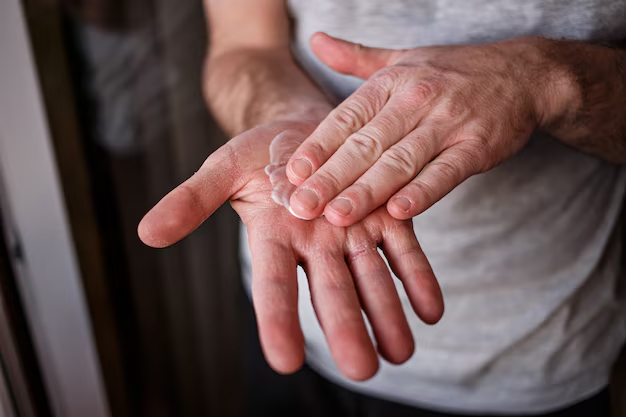Unraveling Rheumatoid Arthritis: Recognizing the Symptoms
Rheumatoid Arthritis (RA) can be a mysterious and challenging condition to navigate, marked by its complex symptoms and the impact it has on daily life. Whether you're new to exploring this condition or seeking more information about its manifestations, understanding the symptoms can provide crucial insights. Let's dive into the myriad ways RA can present itself and explore related aspects that bring context and clarity to this prevalent form of arthritis.
🌟 Discovering the Initial Signs
The onset of rheumatoid arthritis can be subtle, beginning with mild symptoms that might seem trivial at first, yet are significant in identifying and addressing the condition. Early recognition is key for effective management.
Joint Pain and Stiffness
Common Symptoms:
- Morning Stiffness: Lasts for more than 30 minutes and is often one of the first signs.
- Symmetrical Joint Pain: Pain in the same joints on both sides of the body, such as wrists, knees, or fingers.
Why It Matters: Understanding the symmetrical nature and timing of symptoms can help differentiate RA from other joint problems.
Fatigue and Malaise
Chronic tiredness and a general feeling of unwellness often accompany joint symptoms.
- Persistent Fatigue: Not relieved by sleep and can affect daily activities.
- Low-Grade Fever: Occasionally occurs alongside fatigue.
Impact on Life: These symptoms can significantly reduce quality of life and complicate the diagnosis as they are not exclusive to RA.
Swelling and Redness
Visible Clues:
- Joint Swelling: Often accompanies stiffness and pain, making movement difficult.
- Warmth and Redness: The affected joints might feel hot or appear reddish.
Practical Insight: Monitoring changes in joint appearance helps track the progression and effectiveness of treatments.
🧩 Beyond the Basics: Complex Symptoms
RA can affect more than just joints, manifesting in ways that can surprise many.
Rheumatoid Nodules
These are firm lumps under the skin near affected joints and are indicative of more severe disease progression.
- Size and Number: Can vary widely, typically appearing on pressure points like the elbows.
Systemic Effects
RA is a systemic disease, meaning it can impact the entire body, not just the joints.
- Lung Issues: Inflammation can lead to scarring and reduced lung function.
- Heart and Blood Vessels: Increases the risk of cardiovascular diseases.
Psychological Impact
Mental Health Considerations:
- Depression and Anxiety: Chronic illness can challenge mental health, necessitating holistic care approaches.
- Cognitive Effects: "Brain fog" or difficulty concentrating.
Support Strategies: Encouraging a supportive network and mental health guidance can be crucial.
🔍 Differentiating from Other Conditions
RA symptoms can overlap with other forms of arthritis, such as osteoarthritis and lupus. Understanding these differences is vital in ensuring accurate diagnosis and management.
Comparing RA and Osteoarthritis
Key Distinctions:
- Age of Onset: RA often begins between ages 30 to 60, while osteoarthritis tends to manifest later in life.
- Symptom Development: RA symptoms manifest symmetrically, while osteoarthritis affects joints more randomly.
Lupus vs. RA
Lupus, an autoimmune condition, shares several symptoms with RA but includes more systemic effects, such as kidney involvement and a characteristic facial rash.
- Diagnostic Tests: Specific blood tests help distinguish between these conditions.
🛠️ Managing Symptoms: Practical Approaches
While direct advice or treatments aren't discussed here, recognizing how lifestyle changes and general strategies can aid in managing symptoms is essential.
Maintaining Mobility
Exercise: Regular, low-impact activities like swimming or walking help maintain joint function and overall health.
- Flexibility and Strength: Tailored exercises can bolster joint support and reduce stiffness.
Nutrition and Diet
Eating Well: An anti-inflammatory diet may complement other management strategies.
- Key Ingredients: Omega-3 fatty acids, antioxidants, and whole foods are generally considered beneficial.
Stress Management
Mind-Body Techniques: Strategies like mindfulness and meditation can be effective in coping with chronic illness stress.
- Holistic Health: Encouraging a balanced lifestyle helps in minimizing symptom impact.
📊 Visual Guide: Key RA Symptom Takeaways
Here's a snapshot of what to watch for in RA, summarized for quick reference:
| Symptom | Description/Impact |
|---|---|
| 🔄 Morning Stiffness | Significant stiffness lasting over 30 minutes upon waking. |
| 🤕 Symmetrical Pain | Pain affecting both sides of the body in a similar manner. |
| 😴 Fatigue | Persistent tiredness not alleviated by rest. |
| 🔥 Joint Swelling | Noticeable swelling, often with warmth and redness. |
| 📉 Fatigue & Fever | Persistent fatigue, sometimes accompanied by low-grade fever. |
| 🚨 Nodules and Lumps | Firm lumps under the skin, particularly on pressure points. |
| 🫀 Systemic Effects | Impact on lungs and potential cardiovascular complications. |
| 🧠 Mental Health | Possible depression, anxiety, and cognitive difficulties. |
Bringing It All Together
Understanding rheumatoid arthritis is an ongoing journey that requires attention to changes in your body and an informed perspective on symptoms and management. By recognizing the diverse ways RA can present itself, individuals are better equipped to discuss symptoms with healthcare professionals and explore suitable management strategies. This comprehensive look at RA symptoms not only raises awareness but also empowers those affected by offering clarity and direction in managing their health journey.

Related Topics
- a Septic Arthritis
- Are Bananas Bad For Arthritis
- Are Tomatoes Bad For Arthritis
- Can An Inflamed Nerve Cause Arthritis
- Can An Inflamed Nerve Cause Arthritis In Dogs
- Can An x Ray Show Arthritis
- Can Arthritis Be Cured
- Can Arthritis Be Reversed
- Can Arthritis Become Septic After Infection From Injection
- Can Arthritis Cause Numbness